Solar eclipse of May 9, 1910
A total solar eclipse occurred on May 9, 1910. A solar eclipse occurs when the Moon passes between Earth and the Sun, thereby totally or partly obscuring the image of the Sun for a viewer on Earth. A total solar eclipse occurs when the Moon's apparent diameter is larger than the Sun's, blocking all direct sunlight, turning day into darkness. Totality occurs in a narrow path across Earth's surface, with the partial solar eclipse visible over a surrounding region thousands of kilometres wide. Totality was visible from part of Wilkes Land in Antarctica and Tasmania in Australia.
| Solar eclipse of May 9, 1910 | |
|---|---|
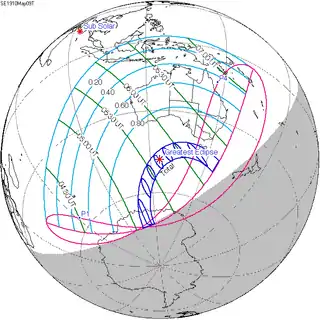 Map | |
| Type of eclipse | |
| Nature | Total |
| Gamma | -0.9437 |
| Magnitude | 1.06 |
| Maximum eclipse | |
| Duration | 255 sec (4 m 15 s) |
| Coordinates | 48.2°S 125.2°E |
| Max. width of band | 594 km (369 mi) |
| Times (UTC) | |
| Greatest eclipse | 5:42:13 |
| References | |
| Saros | 117 (63 of 71) |
| Catalog # (SE5000) | 9304 |
Related eclipses
Solar eclipses of 1910–1913
This eclipse is a member of a semester series. An eclipse in a semester series of solar eclipses repeats approximately every 177 days and 4 hours (a semester) at alternating nodes of the Moon's orbit.[1]
| Solar eclipse series sets from 1910–1913 | ||||
|---|---|---|---|---|
| Ascending node | Descending node | |||
| 117 | May 9, 1910 Total |
122 | November 2, 1910 Partial | |
| 127 | April 28, 1911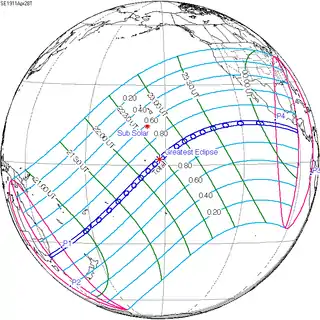 Total |
132 | October 22, 1911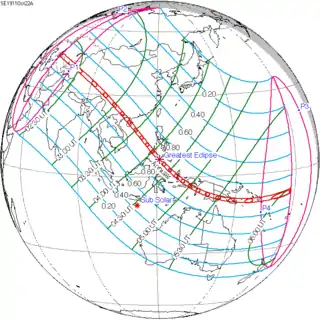 Annular | |
| 137 | April 17, 1912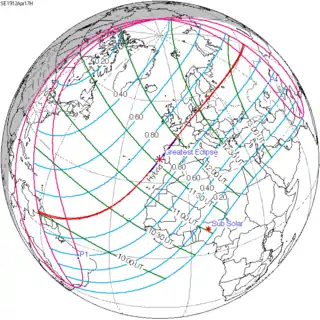 Hybrid |
142 | October 10, 1912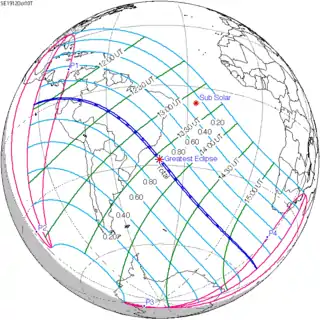 Total | |
| 147 | April 6, 1913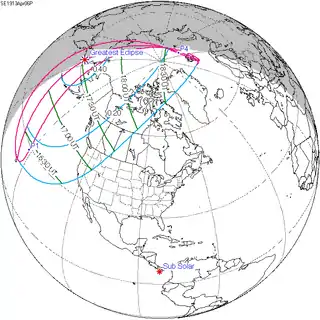 Partial |
152 | September 30, 1913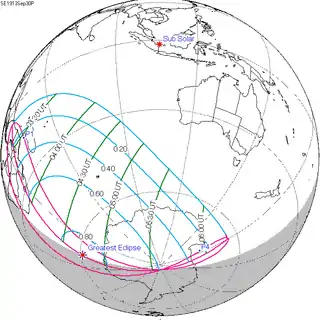 Partial | |
Metonic series
The metonic series repeats eclipses every 19 years (6939.69 days), lasting about 5 cycles. Eclipses occur in nearly the same calendar date. In addition, the octon subseries repeats 1/5 of that or every 3.8 years (1387.94 days).
| 21 eclipse events between July 21, 1906 and July 20, 1982 | ||||
|---|---|---|---|---|
| July 20–21 | May 9 | February 24–25 | December 13–14 | October 1–2 |
| 105 | 107 | 109 | 111 | 113 |
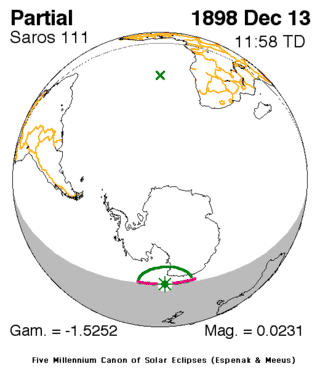 December 13, 1898 |
||||
| 115 | 117 | 119 | 121 | 123 |
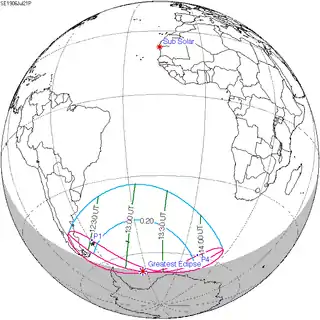 July 21, 1906 |
 May 9, 1910 |
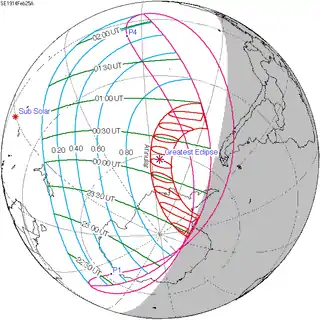 February 25, 1914 |
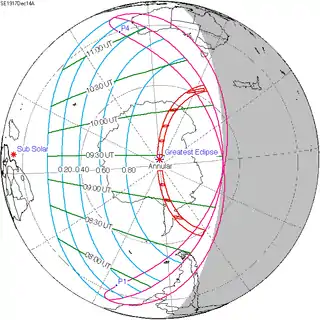 December 14, 1917 |
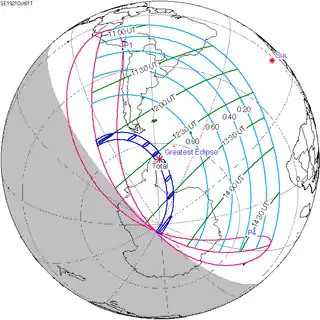 October 1, 1921 |
| 125 | 127 | 129 | 131 | 133 |
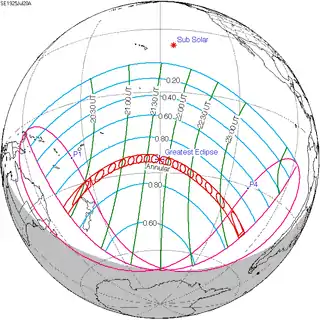 July 20, 1925 |
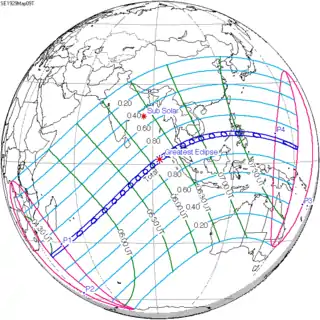 May 9, 1929 |
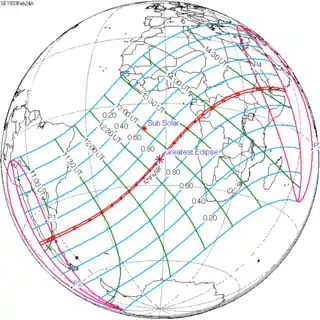 February 24, 1933 |
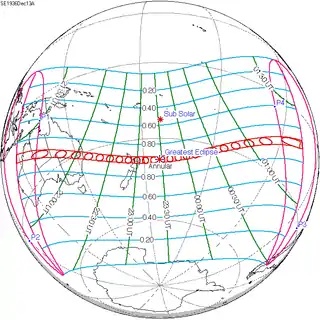 December 13, 1936 |
 October 1, 1940 |
| 135 | 137 | 139 | 141 | 143 |
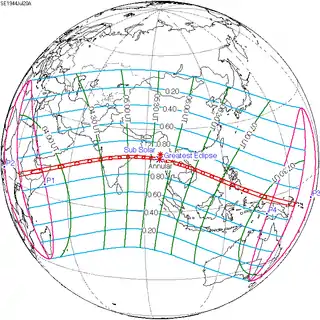 July 20, 1944 |
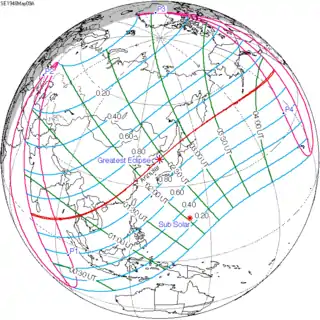 May 9, 1948 |
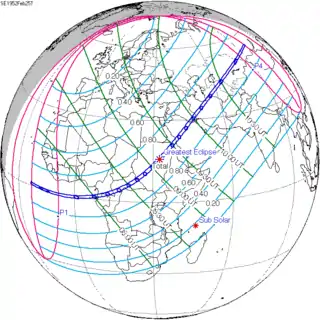 February 25, 1952 |
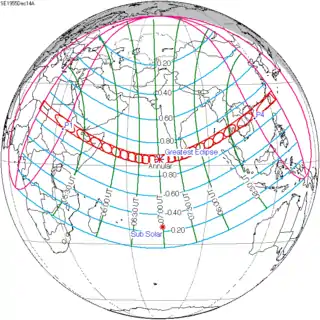 December 14, 1955 |
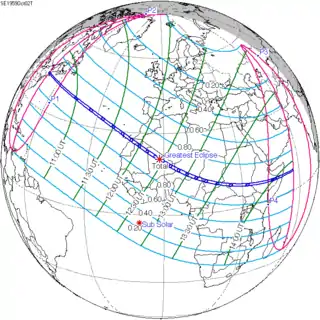 October 2, 1959 |
| 145 | 147 | 149 | 151 | 153 |
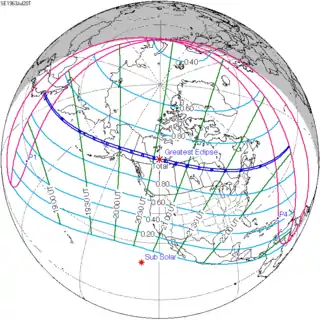 July 20, 1963 |
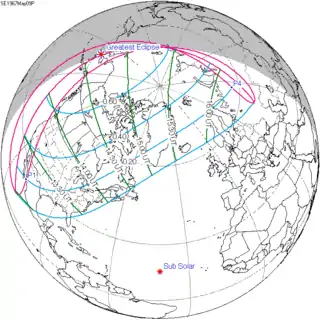 May 9, 1967 |
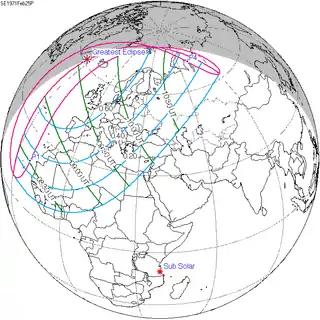 February 25, 1971 |
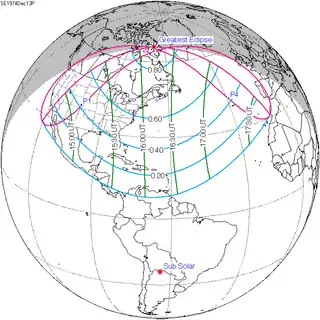 December 13, 1974 |
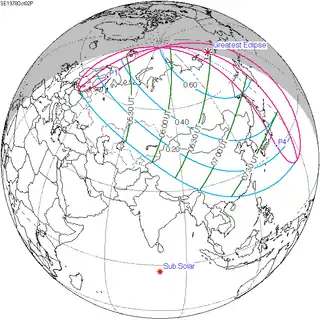 October 2, 1978 |
| 155 | ||||
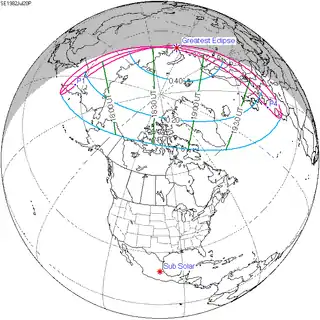 July 20, 1982 | ||||
References
- van Gent, R.H. "Solar- and Lunar-Eclipse Predictions from Antiquity to the Present". A Catalogue of Eclipse Cycles. Utrecht University. Retrieved 6 October 2018.
- Earth visibility chart and eclipse statistics Eclipse Predictions by Fred Espenak, NASA/GSFC
.jpg.webp)

